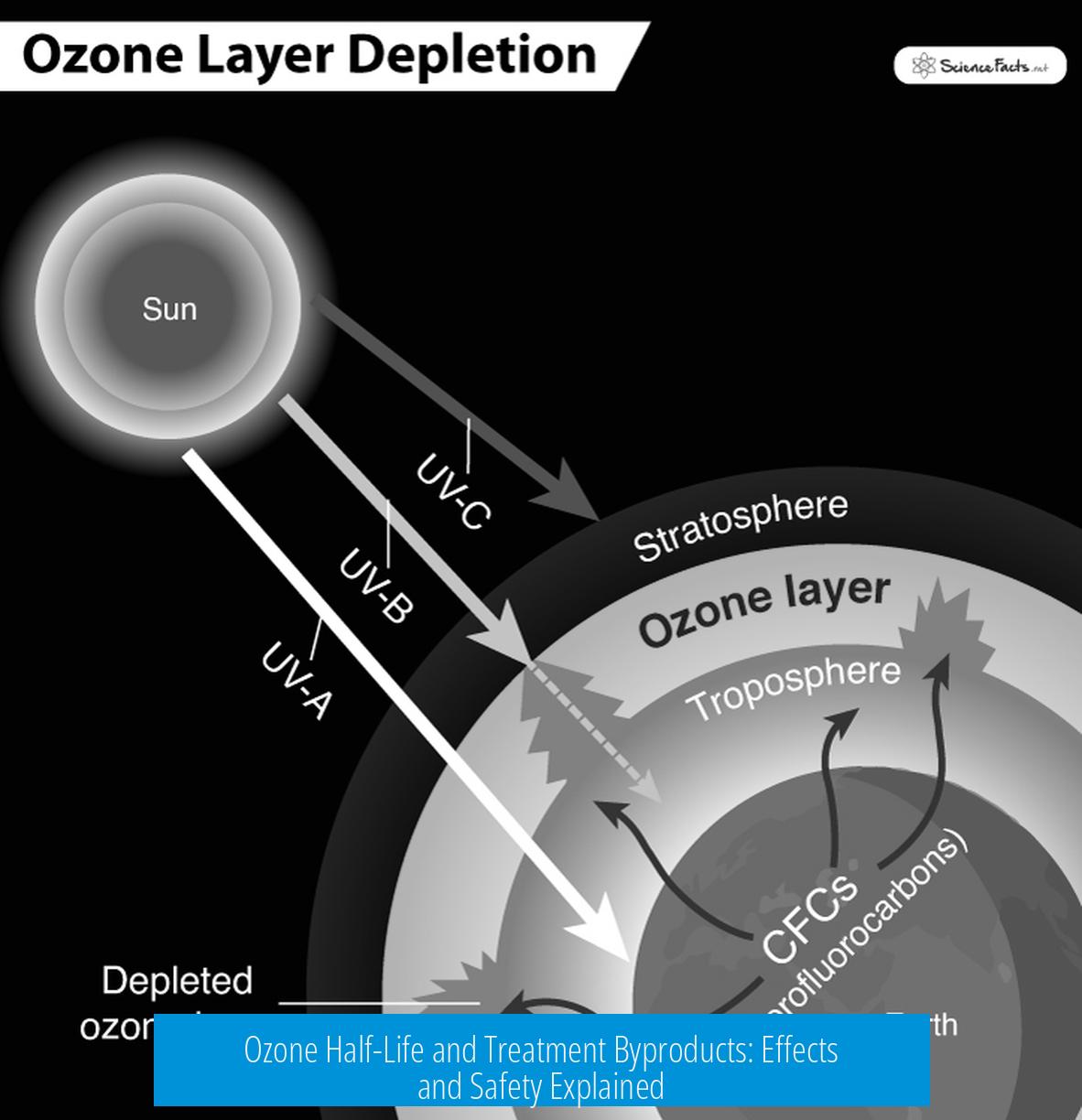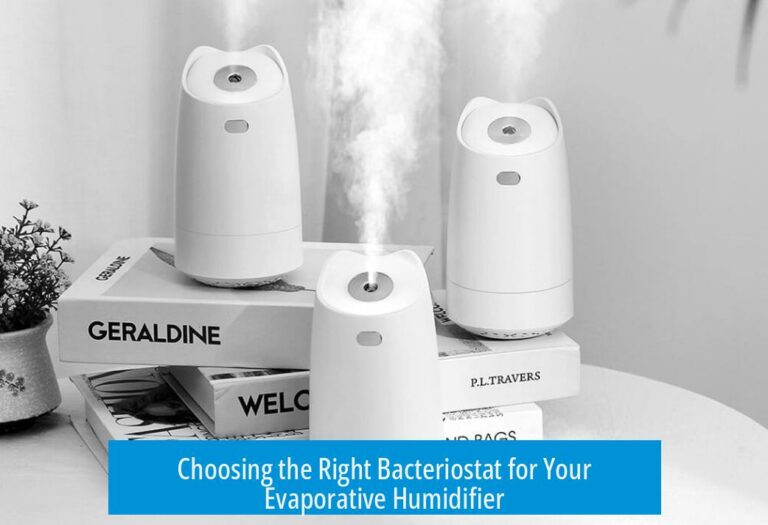Ozone Half Life and Treatment Byproducts Explained
The half-life of ozone in air ranges from 10 to 60 minutes, depending on environmental factors such as altitude, temperature, and humidity. As ozone decomposes, it breaks down mainly into oxygen (O2), the same gas essential for human life. Any ozone byproducts formed during reactions with contaminants tend to convert to carbon dioxide (CO2) and trace substances, which dissipate quickly in well-ventilated spaces.
Understanding Ozone and Its Half-Life
Ozone (O3) exists as a reactive gas known for its strong oxidizing properties. It does not bind to small particles and remains airborne until it decomposes or reacts with other substances.
- The half-life describes the time it takes for half of the ozone concentration to break down.
- Commonly reported values range from 10 to 60 minutes in ambient air.
- Environmental parameters strongly influence ozone stability.
Factors that shorten ozone’s half-life include:
- Higher humidity – water vapor accelerates ozone decomposition.
- Increased temperature – warmer air promotes faster breakdown.
- Altitude variations – air pressure and pollution impact ozone persistence.
Ozone Breakdown and Resulting Products
Ozone is unstable and readily decomposes. Its primary breakdown reaction is self-decomposition:
2 O3 → 3 O2
This reaction yields oxygen gas (O2), the same molecule essential for respiration.
When ozone reacts with organic or inorganic contaminants, the oxidation process converts the substances mainly into carbon dioxide and water. For example, when odor-causing compounds from cigarette smoke interact with ozone, they oxidize to form CO2 and minor side products. These reactions help reduce odors but may leave residual stains or traces of other compounds.
Key points about ozone byproducts:
- Main product of ozone degradation is regular oxygen.
- Reactions with contaminants mostly produce CO2 and small amounts of byproducts.
- No long-lasting residue remains after ozone breaks down.
- Any residual gases dissipate rapidly if the area is ventilated.
Safety and Ventilation After Ozone Use
Due to ozone’s strong oxidative nature, inhaling ozone gas is hazardous. It can irritate respiratory pathways and cause health issues. Proper precautions ensure safety after ozone is introduced, especially in indoor environments.
Recommended Practices
- Vacate the area while the ozone generator operates.
- After ozone treatment, ventilate the space thoroughly for several hours or days.
- Use HVAC systems or fans to circulate and exchange air, accelerating ozone breakdown.
- Avoid enclosed, stagnant spaces where ozone cannot dissipate quickly.
Ozone has a strong, sharp smell that intensifies immediately post-treatment but gradually disappears as it converts back to oxygen. Allowing sufficient time for this process minimizes exposure risk.
Ozone Dissipation Timeline
| Time After Ozone Generation | Ozone Concentration | Notes |
|---|---|---|
| 0 to 10 minutes | High | Ozone concentration is at peak; avoid exposure |
| 10 to 60 minutes | 50% to 10% | Rapid decomposition occurring; ventilation important |
| 1 to 3 hours | Low | Most ozone converted to oxygen; residual odors dissipate |
| 1 to several days | Minimal to none | Space safe for re-entry; air turnover completes breakdown |
Applications of Ozone and Byproducts
Ozone’s reactivity makes it useful for deodorizing, sterilizing, and disinfection. Examples include:
- Hotel room cleansing – odors eliminated; no toxic residue remains.
- Bottled water sterilization – ozone decomposes without altering water composition.
- Air purification in contamination-prone zones.
In all these cases, the conversion of ozone back to oxygen ensures no harmful buildup after treatment. The harmless nature of resulting oxygen is a key advantage.
Summary of Ozone Half-Life and Byproduct Behavior
- Ozone half-life in air ranges approximately 10–60 minutes.
- Ozone decomposes mainly into oxygen gas (O2).
- It reacts with contaminants to form carbon dioxide and minor byproducts.
- No lasting residue remains, making it useful for cleaning and sterilization.
- Proper ventilation is essential to dissipate residual ozone and reduce inhalation risks.
- Exposure to ozone gas should be avoided during and shortly after treatment.
- Circulating air and HVAC systems speed removal of residual ozone.
What is the typical half-life of ozone in air?
Ozone’s half-life in air ranges from 10 to 60 minutes. This depends on factors like humidity, altitude, and air conditions. It breaks down relatively quickly under typical indoor conditions.
What happens to ozone when it breaks down?
Ozone decomposes primarily into oxygen (O₂), the same oxygen we breathe. It also reacts with other chemicals, often turning odor-causing substances into carbon dioxide (CO₂) and trace amounts of byproducts.
Are there any residues left after ozone treatment?
Ozone itself leaves no residue because it breaks down into oxygen. However, chemical reactions with odors can produce small amounts of other substances and stains. Proper ventilation helps remove these byproducts.
How should a space be ventilated after using ozone?
After ozone use, ventilate the area for several hours to days. Running fans or HVAC systems helps circulate air and speeds ozone’s breakdown into oxygen. Avoid occupying the space until ozone levels drop.
Is ozone safe to breathe right after treatment?
No, ozone can be toxic if inhaled in high amounts immediately after treatment. Waiting for proper ventilation ensures the gas turns back into safe, breathable oxygen before re-entry.





Leave a Comment